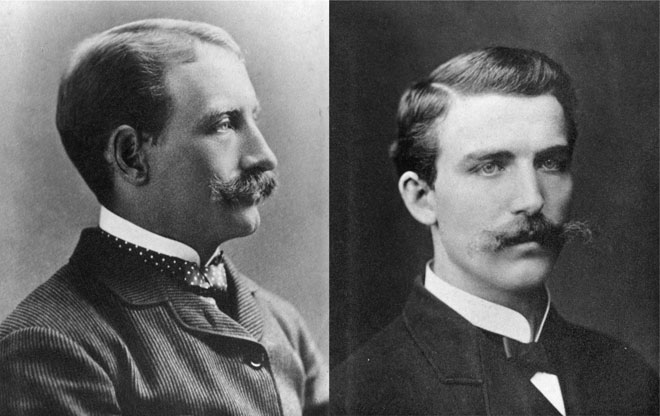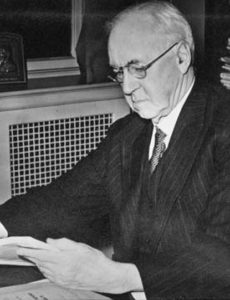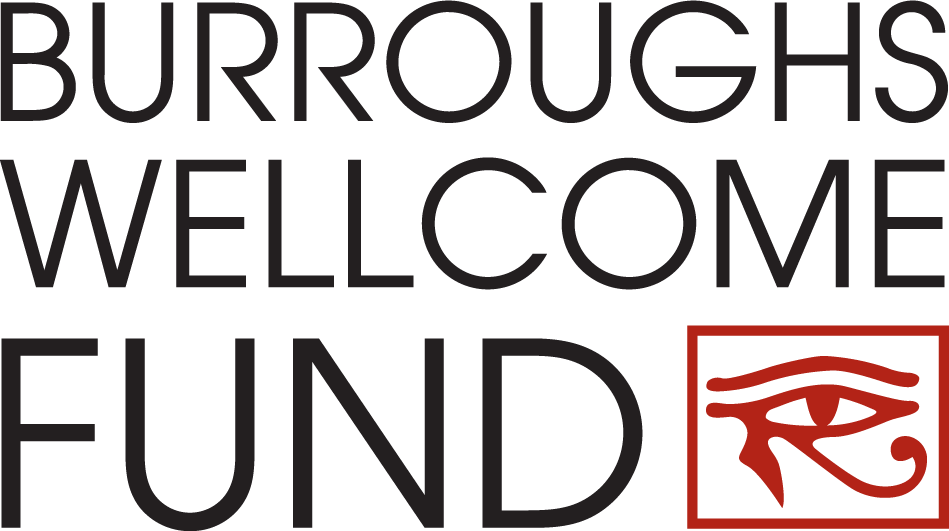BWFund Timeline
-
1880
Silas Burroughs and Henry Wellcome form the Burroughs Wellcome and Co. in London.
-
1936
Sir Henry Wellcome dies and vests all of his corporate shares in a new entity–the Wellcome Trust. The Wellcome Trust devotes all of its income to research in medicine and allied sciences and to the maintenance of research museums and libraries dedicated to these fields. This is the predecessor to the BWF.
-
1955
BWF established as a corporate foundation in Tuckahoe, New York.
-
1959
First competitive award program launched—Clinical Pharmacology Scholar Awards.
-
1978
BWF grantmaking reaches $1 million annually.
-
1981
Molecular Parasitology Scholar Awards program launched.
-
1987
Hitchings Awards for Innovative Methods in Drug Design and Discovery launched.
-
1991
First female member appointed to the board—Dr. Gertrude Elion
-
1993
BWF receives $400 million endowment from the Wellcome Trust and becomes independent private foundation.
-
1994
Dr. Enriqueta Bond becomes first full-time president.
-
1996
International Malaria Genome Project launched, with BWF support
-
2000
BWF conducts second terrain mapping exercise, which focuses core programs on five areas: basic biomedical sciences, infectious diseases, interfaces in science, translational research, and science education.
-
2007
Fast Track program for college juniors and seniors studying mathematics and science education is released. The Fast Track program provides $5.4 million in funding in the form of $6,500 scholarships and an additional $5000 in salary supplements for recent grads that secure employment in a North Carolina public school.
-
2008
The Clinical Scientist Awards in Translational Research (TRANS) reaches $72 million in total funding over 97 clinical professionals since its inception in 1997.
-
2011
FDA Commissioner Margaret Hamburg made regulatory science a centerpiece of the agency’s strategy for fostering innovation. This spawned the Innovation in Regulatory Science Awards (IRSA) program, aimed to mimic what the Fund had accomplished in the previously underfunded area of translational research.

Silas Burroughs and Henry Wellcome, both of whom were educated in the United States and had represented U.S. drug companies in the United Kingdom, recognized that a revolution then taking place in the American pharmaceutical business offered great opportunity for expansion and success abroad. This revolution, which had originated in England but was finding its fullest expression in the United States, centered on the development of “compressed” medicines–pills–that could be mass-produced and packaged for wide and rapid distribution. Because they delivered standardized, reproducible dosages, these new tablet formulations were viewed as being safer and more effective than the common potions and powders of the day.
 The two men formed their partnership in London in 1880, and their enterprise–known as Burroughs Wellcome and Co.–prospered. After Silas Burroughs died in 1895, Henry Wellcome directed the growth of the company into an international network, with notable expansion in the first two decades of the 20th century. New subsidiaries were opened on several continents and in numerous countries, including the United States. As the business grew, Wellcome held firm to his strong belief that research was basic to the development of excellent pharmaceutical products–a belief he put into practice by establishing the industry’s first research laboratories.
The two men formed their partnership in London in 1880, and their enterprise–known as Burroughs Wellcome and Co.–prospered. After Silas Burroughs died in 1895, Henry Wellcome directed the growth of the company into an international network, with notable expansion in the first two decades of the 20th century. New subsidiaries were opened on several continents and in numerous countries, including the United States. As the business grew, Wellcome held firm to his strong belief that research was basic to the development of excellent pharmaceutical products–a belief he put into practice by establishing the industry’s first research laboratories.
In 1924, Wellcome consolidated all of the company’s holdings, both in England and abroad, under a corporate umbrella that he named The Wellcome Foundation Ltd. The scope of the activities involved–including businesses, museums, libraries, and numerous research projects on several continents–is a measure of Henry Wellcome’s vision, energy, and contribution to international science. This was acknowledged by many honors, including a knighthood conferred on him in 1932 by King George V.
When Sir Henry died in 1936, his will called for vesting all of the corporate shares in a new entity–the Wellcome Trust. The Trust’s charge was to devote all of its income to research in medicine and allied sciences and to the maintenance of research museums and libraries dedicated to these fields. Over the decades, the Trust has supported a vast array of biomedical research in the United Kingdom and other selected regions of the globe, and the Trust has grown to become the world’s largest charitable foundation devoted exclusively to the biomedical sciences.
 In 1955, Sir Henry Dale, one of the Trust’s original trustees and its chair for 21 years, and William N. Creasy, president and chair of Burroughs Wellcome Co.-USA, envisioned a U.S. extension of the Wellcome Trust–and so was born the Burroughs Wellcome Fund, which would be supported by the U.S. company. Both men saw BWF as a natural extension of Henry Wellcome’s will and its intent, as well as an acknowledgment of his native land and the great success of the American branch of the Wellcome enterprise. For nearly 40 years as a corporate foundation, BWF focused its modest financial resources in selected areas to advance scientific knowledge.
In 1955, Sir Henry Dale, one of the Trust’s original trustees and its chair for 21 years, and William N. Creasy, president and chair of Burroughs Wellcome Co.-USA, envisioned a U.S. extension of the Wellcome Trust–and so was born the Burroughs Wellcome Fund, which would be supported by the U.S. company. Both men saw BWF as a natural extension of Henry Wellcome’s will and its intent, as well as an acknowledgment of his native land and the great success of the American branch of the Wellcome enterprise. For nearly 40 years as a corporate foundation, BWF focused its modest financial resources in selected areas to advance scientific knowledge.
In 1993, BWF received from the Wellcome Trust a $400 million gift that altered the Fund’s very nature. The gift enabled BWF to become a completely independent foundation, with no direct ties to its founding company. (Nor is BWF affiliated in any way with what has come to be GlaxoSmithKline.) BWF stands as an independent private foundation whose mission is to advance the medical sciences by supporting research and other scientific and educational activities. Aided by the Trust’s gift, BWF now pursues an enhanced role in biomedical research in the United States and has expanded its support to include Canada.
The list of individuals on both sides of the Atlantic who participated in instilling the Wellcome legacy in the Burroughs Wellcome Fund is a long one. William Creasy remained at BWF’s helm for more than a decade, guiding development of the Fund’s mission and scientific activities. William Dowling, who had developed the legal structure of the Fund, served as its chair from 1971 until 1974. George Hitchings, Ph.D., a Nobel laureate who spent most of his career with Burroughs Wellcome Co., served as BWF’s president from 1974 until 1990, and his leadership strongly reinforced the Fund’s belief in the essential link between basic research and practical applications in medicine. And Howard Schaeffer, Ph.D., a pioneering chemist who chaired BWF from 1991 until 1994, played a significant role in helping the Wellcome Trust carry out its gift to the Fund.

The importance of curiosity-driven research, as endorsed by Henry Wellcome in the early years of the century, continues to guide the Burroughs Wellcome Fund. BWF seeks to accomplish two primary goals through its programs: to help outstanding scientists early in their careers develop as independent investigators, and to advance fields in the basic medical sciences that are undervalued or in need of particular encouragement. In carrying out this work, BWF is governed by a Board of Directors composed of distinguished scientists and business leaders, and its competitive award programs are directed by advisory committees composed of leading researchers and educators.
Thus, more than a century after two enterprising American pharmacists set in motion their pioneering partnership, the Burroughs Wellcome Fund remains committed to the belief that fostering research by the best and brightest scientists offers the fullest promise for improving human health today and in the new millennium.
For more information on the history of the Burroughs Wellcome Fund, refer to the history book below:
